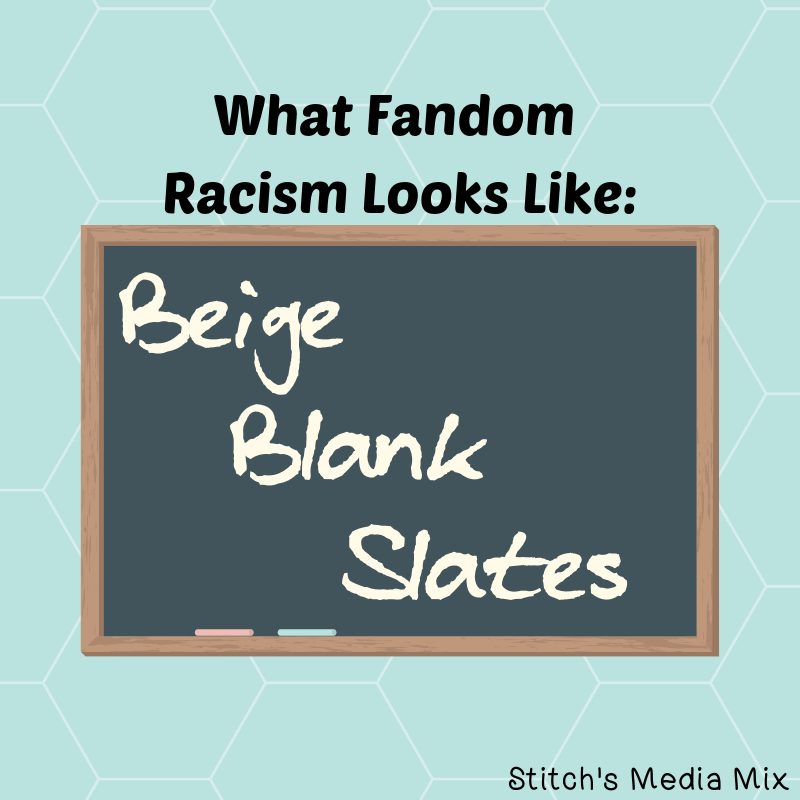
“certain bodies could be read as blank slates not already overdetermined by race” – a partial quote from page 17 of Melanie E. S. Kohnen’s Screening the Closet: Queer Representation, Visibility, and Race in American Film and Television.
Some of fandom’s favorite characters are “blank slates”.
Beige blank slates, that is.
General Armitage Hux from the Star Wars sequel trilogy.
Arthur and Eames from Inception.
Q from Skyfall and Spectre.
Clint and Phil Coulson in the first Thor movie.
Various minor white male characters in a show or film that somehow became one of/the most popular characters in their source media or fandom.
In this installment of “What Fandom Racism Looks Like”, we’ll be looking at the idea of the “blank slate” primarily in Western media-focused slash fandom spaces.
We’ll be asking what a blank slate looks like, what these fans and fandoms get out of these characters, what characters will never be considered blank enough to be loved, and how, while the claim that fandom prefers “blank slate characters” might well be true and there are many instances where the Beige Blank Slate provides necessary representation within fandom, the preference that prioritizes white male characters above all others kind of messes up something that has the potential to be great.
First, let’s start with a basic definition of fandom’s “blank slate”. It’s pretty straight forward.

Fandom’s blank slate is a character that fandom believes is underexplored or unexplored by the narrative. They’re considered a blank slate because they’re not developed in the source material in a significant way (or, if they are developed with obvious characterization, fandom pretends that they’re not) so fandom can essentially write what they want onto this character.
They may have a first name, but they might lack a surname. They probably aren’t the main character in a piece of media, but they may have at least one significant interaction with a character that is. In their initial appearance, these blank slates tend to have limited amounts of screen time and dialogue, non-existent backstory information in the main source material, and close enough proximity to one of their fandom’s white favorites to spark a fire of interest in the relationship.
So, what does fandom get out of “blank slate” characters?
Well, I’d guess that it’s all connected to the freedom to play even deeper in an established universe.
Transformative fandom spaces are all about getting our hands on the characters in the media we love and think deserve more (and better) stories. This is just another aspect of that.
True blank slates offer even more freedom than the average fictional character because there’s technically no way to write them out of character, or to go against canon for them because they’re generally not characters who are developed in canon with set-in-stone characterization or backstory. So, you have a character who’s in your favorite canon that the creators aren’t even using, and… a blank slate is born.
(I’d also say that the “blank slate” in fandom is a kind of cousin to what happens when a canon character– like Darcy Lewis from Thor, Batman from uh… Batman, or Rey from The Force Awakens – is turned into a “self insert” in fanworks – or in Batman’s case… his actual comics.
The difference I’ve come to notice as I moved through fandom reading these fanworks is that the “self insert” take on established characters is a more direct form of wish fulfillment that is satisfied by the fan creator seeing and placing themselves into the source material through that character while the blank slate isn’t typically seen as the creator inserting themselves directly into canon or a relationship.)
The problem is that most of fandom’s biggest blank slates are white male characters… and it’s just accepted that these white male characters are somehow simultaneously more interesting and less developed than other characters that fandom doesn’t bother to develop.
These characters that fandom tends to pass over are typically the white female characters and characters of color who are written off as “too boring” for fans to be interested in or engaged with even when they’re the stars of the source media or connected to the main character in whatever they’re in.
Let’s look at the Pacific Rim fandom and the characters (and ships) that fandom chose to hype up. Pacific Rim (2013) primarily focused on Mako Mori (Rinko Kikuchi) and Raleigh Becket (Charlie Hunnam) as they and an ensemble cast of characters – which included Idris Elba as Mako’s adoptive father Stacker Pentecost – tried to do battle against kaiju that were invading the Earth.
Guess who the fan favorite characters are.
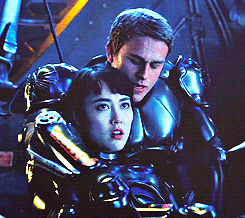 If you guessed Mako, the way I did before I went looking for fan fiction for the film, you’ve guessed wrong.
If you guessed Mako, the way I did before I went looking for fan fiction for the film, you’ve guessed wrong.
Despite the fact that much of the film revolves around Mako’s strength as a jaeger pilot and her relationships with Stacker and Raleigh, the fandom zeroed in on… all the white guys.
The most popular characters (and ship) in the fandom are the two (white and male) scientists Newton “Newt” Geiszler and Hermann Gottlieb. While the Pacific Rim fandom isn’t exactly churning out tons of fanworks, of the 9033 stories currently on AO3 for the fandom, a solid third of the fanworks in the fandom are for that ship. (The second runner up, with 881 fanworks is Raleigh Becket and Chuck Hansen – a minorly antagonistic white male character that dies a heroic death at the end of the film.)
Five years later, with Pacific Rim: Uprising focusing on Stacker Pentecost’s son Jake and a new generation of jaeger pilots from around the world, Geiszler and Gottlieb somehow wound up as the fandom favorite’s again.
This is a movie where John Boyega’s Jake Pentecost swans around in a bathrobe looking thicc and having flirty tension with Scott Eastwood’s Nate Lambert and the fandom goes with… the two white guys from the first film.
What’s interesting and infuriating about the Pacific Rim fandom is that it’s a fandom that zeroed in on the Geiszler/Gottlieb ship because “they’re not that developed in canon”, but they actually ignore or reject where things in the novelizations and word of god commentary for the films like in the first one where Gottlieb and his wife Vanessa, who is a biracial Black model, are expecting their first child.
The thing that gets me is that the fandom doesn’t just pretend that Vanessa doesn’t exist or kills her off so that her mourning hubby can fall into the arms of his partner in science. No, that’d be too easy.
There are people out there writing full text posts ragging on her existence because “she’s a model and clearly not intelligent enough to understand Hermann’s complex kaiju science” or arguing for her continued erasure in fandom because “her character is not developed anywhere at all and it’s actually clear that Hermann is miserable in his relationship with her and that she was created to disrupt our queer readings of him”. (That wrong-headed ”queer and feminist” take in particular is contested HERE.)
If you’re following along: in the Pacific Rim fandom white male characters with little to no solid characterization and backstory are worthy of fandom labor to build them up and develop them from their original state as blank slates while a Black female character who literally only shows up as a named character in a personnel file gets demonized because she can’t be good enough for one of the white guys or she must have been created to hurt queer fans.
Interesting double standard, isn’t it?
Vanessa Gottlieb should be a perfect blank slate for fandom. All we know about her is her name, job, husband, and the fact that she’s pregnant. We don’t know anything about her personality, her appearance (aside from the fact that she’s a model, biracial, and has curly hair), or her backstory. These are all things that fandom would rush to fill in for a white male character with a similar dearth of information.
But because she’s a Black woman who somehow threatens the non-canon male/male relationship they’ve come to revere, she’s not a blank slate. She’s a threat. She’s a problem.
Because characters of color don’t really get to be the big blank slates in fandom.
Not even when they’re dudes in slash fandom spaces.
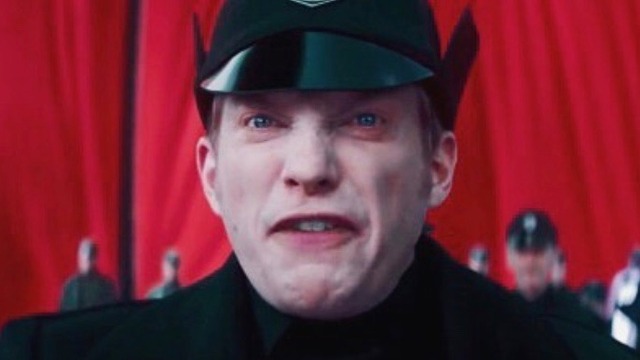
Domnhall Gleeson’s General Armitage Hux has the most appearances of any character in the Star Wars sequel trilogy AO3 page.
His over EIGHT THOUSAND appearances in fanworks – where he’s primarily shipped with Adam Driver’s Kylo Ren – are directly at odds with his limited screen time. Between 2015’s The Force Awakens and 2017’s The Last Jedi, the character has a less than nine minutes of screentime. He’s not anything close to a major character and he’s explicitly a proud part of the First Order’s fascist machine (like Kylo Ren).
However, fandom wants us to believe that the reason he is so popular – so much more popular than the actual male lead of the sequel trilogy, John Boyega’s Finn – is because he’s both a blank slate that they know nothing about and more interesting than Finn.
Both things can’t be true.
Hux, whose main trait in the The Force Awakens was fascism, can’t be a blank slate just waiting for fandom to mold into something useful or interesting and a more interesting character than the main male lead who rejected fascism and is fighting against everything he was brainwashed into believing.
That’s not how that should work.
On top of how I think there are definitely some Hux fans either eagerly identifying and adoring him because of his fascism or pretending that the First Order isn’t fascist/that Hux had a hard childhood that somehow excuses his current role in the First Order, Hux’s whiteness plays a huge part in his popularity in fandom and status as a beloved blank slate.
Yes, the Star Wars universe doesn’t appear to have the concept of race that we do.
However, while whiteness and white privilege probably don’t exist in a galaxy far, far away, they do in our world and within our fandom spaces.
And Hux’s whiteness, along with the whiteness of many of his fans, fuel this investment in him and this attempt to frame him as a basic blank slate just waiting to be (re)written as well as a complex villain who’s just too interesting for them to bother focusing on Finn or Poe.
Hux isn’t actually a blank slate.
His fans like calling him that, sure. But he’s not exactly a fresh whiteboard waiting to be written on with queer signifiers as his fascism gets wiped off with the edge of a sleeve.
Hux has characterization, some sparse backstory about his childhood and early time in the First Order’s command structure, and is a visibly unpleasant character to be around. He’s characterized as a power-hungry fascist working with the First Order, and the scattered tidbits we’ve gotten for his backstory show that he’s deeply enmeshed in the First Order’s everything.
But fandom looks at Hux and sees that aforementioned whiteboard.
They see the blankest of blank slates.
Why?
Because they tend to erase the things about Hux that make him both interesting and awful. They wiped away his devotion to the fascist First Order, his cruelty, his disdain for Kylo Ren and anything/anyone else that threatens his sense of order. They basically turned him into a parody of himself, often writing him as sullen and secretly sweet (and so not a fascist). And they like to give him a cat named Millicent.
Meanwhile, other characters in the Star Wars sequel trilogy are actual blank slates or are on the same level of developed as Hux is and what do they get from fandom?
Little to no development and far from the same amounts of devotion or fanworks because they could never be blank (or beige) enough for fandom.
One of the posts I’ve had boiling about in the back of my head (but couldn’t find again until recently) is one that talks about fandom’s blank slate problem (not in as many words) in the context of Hux and a bunch of other white guys fandom loves and views as blankety blank slates.
In this post, the OP talks about the development of this fandom-exclusive character archetype that has little to no basis in their canon aside from basic appearance. Like Ben Solo, these characters are made up entirely of and for fanon and are characterized in a way that makes them accessible to fandom.
Some of those characterization aspects?
- very tidy/a neat freak
- pays a great deal of attention to his personal presentation (ie: is his uniform wrinkled? Is his hair mussed? Is he blushing? Has he lost his hat, or his leather gloves, has he got blood on his coat? Are his cufflinks okay? Is his suit endangered? All of these things would make him unhappy and definitely happen to him as a direct result of making out with his troublingly messy love interest)
- just wants the galaxy/con/workplace to be Well-Ordered
- is super competent/a genius/good at his job
- tight-lipped with rage
- embarrassed by how much he is into Inappropriately Messy Guy/embarrassed BY Inappropriately Messy Guy
- scowls defensively
Hux in fandom? Is all of these things in various amounts.
Hux in canon?
Not even close. From the “neat freak” stuff, to the “embarassed by how much he’s into a messy dude” stuff, to the “is good at his job” stuff, he’s not really fitting into this mold. Sure, he’s technically invested in a well ordered galaxy and full of rage but again, his main character trait is being invested in fascism so…
Many of fandom’s favorite Beige Blank Slates have that same characterization as well as a similar lack of evidence to how this sort of list is something that stems from canon.
In the linked post, the original poster wildehack describes the Hux-Arthur-Eames-White Guy in fanon as:
The familiar fanon ghost who leaves one shell behind and drifts into another, like a poltergeist. Or, like, a copy of a copy of a copy, dragged from harddrive to harddrive. a familiar ghost we drag around to install in fresh new bodies.
However, no one seems capable of understanding that while migratory fandom and fans are dragging around the ghost of this particular character archetype around, the only characters that they allow to be possessed by that ghost are the white dudes.
The bodies that they move the familiar fanon ghost to all have one very important thing in common: they’re all white and they’re mostly dudes.
The fanon ghost is never capable of possessing someone like Riz Ahmed’s Carlton Drake (Venom) or John Boyega’s Finn (Star Wars: The Force Awakens) or Hannah John-Kamen’s Ghost (Ant-Man and the Wasp) or David Ramsey’s John Diggle (Arrow). It’s never a person of color that fandom sees value in reviving as the ghost of fanon fussiness and it’s very rarely a white woman.
Ghost status, being infected with that immortal archetype and subsequently being seen as the most popular dude in a given fandom, is something that only happens to white male characters. Characters of color in western media fandom are flat out denied the same room to be explored and they’re not just seen as filled in pages (as opposed to the blank slates) but as scratched up pages that no one feels like they can or should engage with.
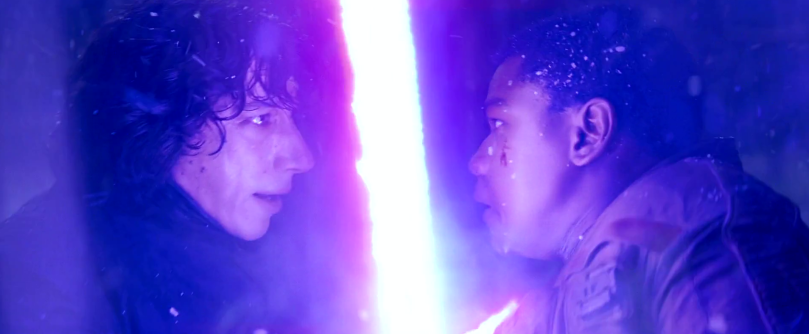
The aspect of fandom’s blank slate I think that I detest the most is the way that it feels as though every white male character can be seen (or reimagined) as a blank slate worthy of development by fandom – even when they aren’t even remotely blank – the opposite reaction happens in fandom for characters of color.
Let’s look at Finn and Kylo Ren in the Star Wars fandom.
Kylo Ren is a canonical patricidal fascist who ends The Last Jedi as the leader of the First Order and spends a lot of his time being a right asshole to basically everyone around him up to and including killing two unarmed elderly men (his dad, Han, and Lor San Tekka) and kidnapping and constantly negging Rey. He’s an asshole and a solid villain.
However, in huge portions of fandom, he is seen as an innocent blank slate forced into fascism – because his fandom wants him to be one despite everything he is and has done in his canon appearances. They have even trended tags like #SaveBenSolo and wail about the totally impending “Bendemption” that must be happening in the final film of the trilogy.
Finn, who again is one hell of a blank slate, and actually has the sad “forced into fascism” backstory fandom likes to try and give Kylo, is not given shit. Kylo Ren’s fandom and fans call Finn a coward, call him a liar, call him abusive , call him selfish, and write him off in tweets and fanworks as a hyperviolent stereotype of Black masculinity.
Like Vanessa Gottlieb, Finn isn’t afforded the opportunity to be seen as a neutral character that’s just ripe for reimagining and fanworks. More than Vanessa – because she’s never been cast or fleshed out in Pacific Rim’s supplementary works – he’s seen as uncomfortably political and decidedly non-neutral because of the Blackness of his actor and of many of his fans.
And that’s the thing: in Western media-focused fandoms, characters (and people) of color aren’t seen as neutral. They don’t get to be neutral beige blank slates because of their status as “characters of color”. Without whiteness, they’re not automatically viewed as neutral in the same way that white characters – especially male ones – are.
On top of that, there’s the whole thing where many of fandom’s biggest beige blank slates aren’t actually neutral?
They’re successful in their source media because of their many privileges (their maleness, their able-ness, their wealth or proximity to power) and they’re successful in fandom because they’re… white dudes who are attractive on some level.
But for the most part, in these fandom spaces, none of those things actually seem to count as privilege because folks in fandom are out here automatically ascribing neutrality to privileged identities and to whiteness in particular, without even thinking about it.
(I know y’all aren’t thinking about it because of the shocked-and-offended way y’all always respond when fans of color dare to ask why white men are the main focus in Western media-focused fandoms even though they’re not the main presence in transformative fandom as creators or consumers.)
White male characters are seen as an apolitical character to adore in these fandom spaces. Like it’s expected that in a show or franchise with a diverse cast, the fandom powerhouse ship will probably be two white dudes that don’t even like or know each other. They’re the easiest ships to swallow and they’re the ones that folks in fandom tend to champion above all others.
Because they’re supposedly sans-politics.
Except… that’s not true.
Even though fans try to handwave it away in their talks of escapism, whiteness – white maleness – is a political identity that can’t be ignored because it makes you feel some kind of way to see fans of color talk about this almost rigid focus on white dudes in fandom. But I have to admit, it’s probably easier to pretend that fans of color are the only ones bringing politics into this supposedly escapist space than it is to acknowledge that all of fandom’s beige white slates come preloaded with an inherent and automatic baggage – thanks to the fact that whiteness is seen as a default (and desired) setting – that y’all aren’t interested in unpacking.
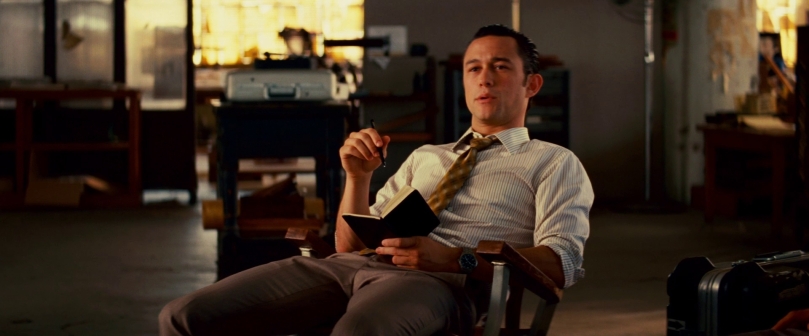
Blank slates aren’t inherently problematic.
Like I said, I get how fandom uses them and that they serve a different (if similar) purpose to self-inserts in fandom. I think it’s fascinating how fandom shapes blank slates and can even introduce representation in the form of the headcanons that become almost-canon across the fandom.
Take for instance the Inception fandom’s repeated headcanons that Joseph Gordon Levitt’s Arthur is Jewish or that Tom Hardy’s Eames is neuroatypical. In the Marvel Cinematic Universe fandom, Kat Denning’s Darcy Lewis is possibly the most popular female character and a character that definitely can go between blank slate and self-insert status. Fandom has decided that Darcy, like the actress who portrays her, is Jewish and that’s something that is present in many stories about her. (Actually, a lot of fandom’s Beige Blank Slates get headcanoned as Jewish and I really do like that part of the trend.)
My big beef?
The same care does not go into characters of color in general, much less when they should have attained status as their fellow blank slates.
In Western media fandoms, characters of color don’t matter to the majority of fandom. Outside of rather small communities within their respective fandoms, these characters don’t get the focus, the fleshing out, or the love that white characters with similar amounts of space in the narrative.
When fans of color ask why the most popular characters and ships in fandom are all white, we get shut down or brushed off. We get told that the white characters – many of whom don’t have any significant screen time in their source media or defining characterization outside of fandom – are more interesting and important. We’re told that they’re blank slates and that fandom just loves those.
But when we ask why –
(Why aren’t characters of color popular even in the fandoms for Western media where they’re the main characters?
Why is it that that many slash fandoms go out of their way to hate on – not just erase — women in their favorite ship’s lives? (And why is it that the hate directed at Black female characters and performers is so uniform in its ugliness? Like the script literally doesn’t change.)
Why do people claim to love characters of color but never actually talk about them or create content for them?
Why is fandom’s fascination with white dude slash ships somehow seen as entirely apolitical and as the epitome of queer representation in fandom?)
Not only do we never get answers beyond “it’s just my preference”, but we’re often subject to outright anger at questioning an established and frankly racist trend in fandom and shipping.
No thanks.
Your personal beige blank slate isn’t the problem.
Fandom’s overwhelming refusal to engage meaningfully, positively, or honestly with characters of color in Western media fandoms to the point where the idea of the “blank slate” in fandom is overwhelmingly a white male character and all other characters need not apply is.
It’s time to write on some different blank slates.
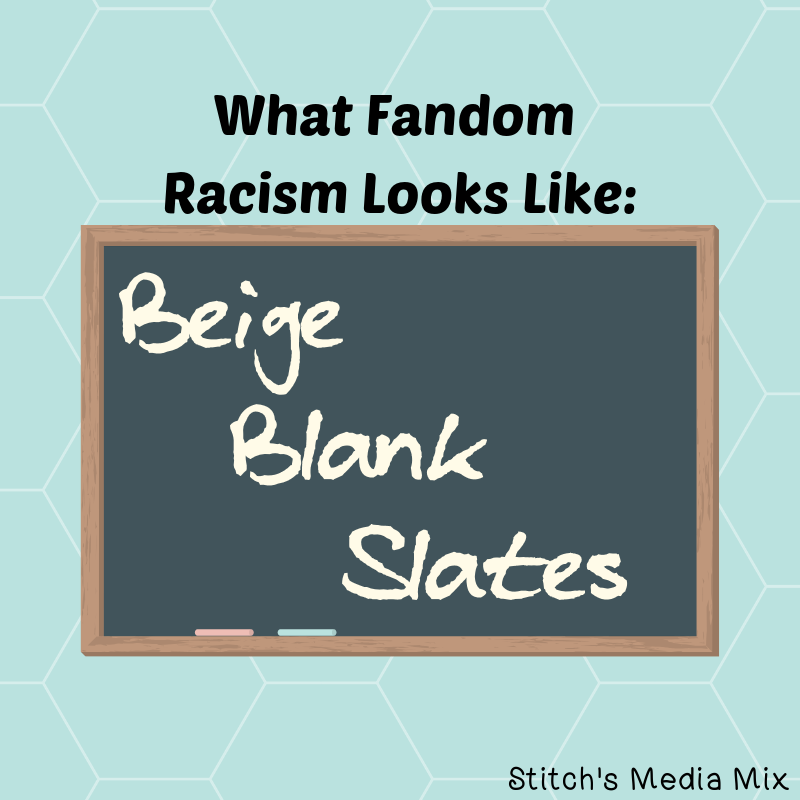
And this is what has led a lot of queer fandom to denounce this utter fascination with non-canon, gay white characters as fetishization. And I’m inclined to agree with that assessment. It certainly is very, very, weird, this laser focused attention on any two white male characters being together, and then the ridiculous amounts of pretzel logic used to excuse it.
LikeLike
I used to think Mako Mori was the fan favorite because, when the movie came out, meta about her was everywhere. Then I went for fanfic and it was about these weird, comedic science guys? That I didn’t care about?
LikeLiked by 1 person
[…] in “What Fandom Racism Looks Like: Beige Blank Slates” I brought up the freakish popularity of famous white dude scientist slash ship Newton […]
LikeLike
[…] blank-slated the hell out of him until there’s almost nothing recognizable about the character as he’s […]
LikeLike
I think what really gets me is that fandom will insist up and down that bland-ass white side-characters are popular bc ‘they’re the perfect blank slate’ yet they’ll also turn around and state that white-male characters get more focus in fandom ‘because they’re better written/developed’ like… you can’t have that both ways. But white fandom wants that both ways because it doesn’t want to let go of it’s white-character focus.
And I’d be much less annoyed by it if people were actually honest about it, but they’re not, instead they walk up and down declaring fandom to be ‘the most progressive’ space(because they put gay-hats on their fave straight white-guys, yes fandom: they are in fact 100% straight, HC’s don’t change that) while ignoring well-written characters of colour or canon LGBT interracial ships(but especially f/f) because ‘they’re just not interesting’.
Curious how the ‘not interesting’ characters are always not-white.
LikeLiked by 3 people
[…] thought is part of a currently shelved follow-up to my What Fandom Racism Looks Like article on Beige Blank Slates and I figured… “Why […]
LikeLike
I remember reading years ago that supposedly one of the draws of writing slash fiction was the “challenge” of putting two canonically straight characters into a gay relationship in a way that would be believable to readers. Make of that what you will.
LikeLike
See, I get that and I clearly have no issue with that because I get the appeal of such a challenge, but over the years, no one has ever been able to explain why Western slash fandom (so not the anime/manga, Korean celebs, Chinese dramas that are popular) is full of people who largely don’t even try to challenge themselves by writing believable queer Black or Latino men in relationships.
LikeLike
[…] brothers excluded her as a young Black woman, but the choice of whiteness and masculinity points to what selves are presumed to be the most convenient to imagine with—a subversive system that propounds racist colonial practice. Instead of seeking to reconcile […]
LikeLike